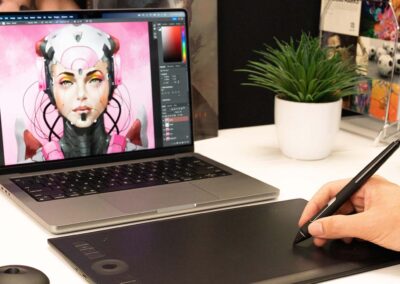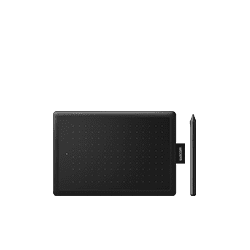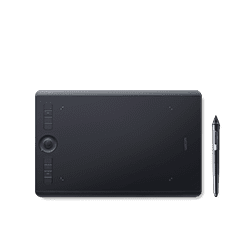The fastest artists are slow and methodical, and you can learn to replicate their approach.
In today’s world, it can seem that if you don’t start investing in your future while you’re still in the womb, you’re behind the curve. Your only option is to move smarter and faster than your competition. However, moving faster doesn’t mean quite what you think. You need to slow down to speed up.
Slowing down feels like a trap. The problem you create in moving fast is focusing on the result. If you’re attempting to become a professional artist or finish an illustration, you think that the faster you achieve the result – the goal – the more progress you’ll make. But the result is not the prize you imagine it to be. Your desire to get ahead quickly tricks you into thinking that it is. Only slow growth will teach you the truth – it’s in the process where you win the most.
The surprising truth about growth
The way you grow should be looked at as a lifestyle, not a phase you end when you meet your goals. Treating the way you grow as a phase is not only a terrible mindset, but it sets you up for failure.
Think back to how many times you set a goal for yourself and actually followed through with it, and achieved that goal. I’ll use myself as an example. I set a goal to break a 5-minute mile when I was in High School. I got really close at 5:14! But never quite made it under five minutes. I wanted to learn how to shuffle dance but I only ever got as far as learning the basic steps. I want to become a professional artist and though I’ve practiced a lot over the years and have had lots of improvement, I’m still not quite there yet.
I imagine that your story is quite similar – you’ve had a lot of goals but few, if any, ever came to fruition. The sad part is, if you didn’t meet your goals, even when you showed incredible improvement, you still look at those experiences as failures. There is an inverse relationship between setting goals and accomplishment. You look back on your progress as a disappointment when, given the right mindset, you could have flourished. Not to mention all the progress you made even if you didn’t meet your goal.
Being busy doesn’t necessarily mean being productive
Working like a madman to achieve your goals is not a badge of honor. Just because you’re busy doesn’t mean your achieving deep learning or creating quality work. In fact, rushing through your work is physically and mentally exhausting. Slowing things down helps you focus your experience to get the most out of it.
Have you ever written a paper or done a project at the last minute? You have a book report due in two weeks and you already read the book so it should be a breeze. You could settle down every couple of days and make some progress but instead you wait till the last day and write it all at once. I didn’t really care about book reports back in high school, but I do care about my artwork. I imagine you do too.
If you did this same thing with your character design assignment, I doubt you would produce anything of quality or learn much through the process. It’s not a badge of honor to rush through things and work through the night till the sun rises the next day. It makes the quality of your work suffer, it ruins your ability to make insights and learn the information you need to get better, and it impacts your physical and mental health (both of which you need to keep healthy as a lifelong artist).

Photo by Greg Rakozy on Unsplash
Learn to love the process
Slowing down is your badge of honor. Learn to love the process and you won’t rush to the end so quickly. There’s nothing wrong with being excited about seeing the finished product, whether it be a completed illustration or your skills rising to the level of a professional artist. The problem only comes when it impacts your progress.
Slowing down will keep you relaxed and allow you to think more clearly. You’ll make less mistakes and accomplish your tasks in a more thorough manner. When we make mistakes we tend to slow down as a cautionary measure. As an artist, if you can overcome failure and view it as a learning opportunity – part of the process – you’re less likely to let mistakes slow you down if they do arise.
Let’s be honest, in making art, 99.9% of the work is the process. The result is just what happens when your done with the process. If you can’t learn to enjoy it, creating art will feel like hell. Slowing down, being methodical, and letting yourself embrace the process (failures and all) will be your surest path to a professional artist.
When you cut out the fast approach that leaves you with mistakes and burnout, that’s when you’ll draw better, faster.

Photo by Tânia Mousinho on Unsplash
A simple tip to slow down
Not trying to rush the process is one thing. Finding ways to slow it down is another. You can learn to love the process and still need ways to bask in the present moment. Do you ever get ideas for your current project in the shower or just before you fall asleep in bed? That’s you slowing down the process with percolation.
Percolation is almost like using procrastination in your favor. When you are engrossed in a process over time, you get momentum, and your brain starts scanning your knowledge and environment for clues. If you’re studying how to draw the face it starts looking at people’s faces and solving the problems that you are having with the cheekbone. It starts seeing how the light falls from a ¾ angle. It’s doing this work in the background and it’s absolutely essential for learning.
Slowing down allows you to incubate your ideas and deliver the creative leaps you wouldn’t get otherwise. You stay relaxed, you’re learning is deeper, and in time you will draw better and faster.










